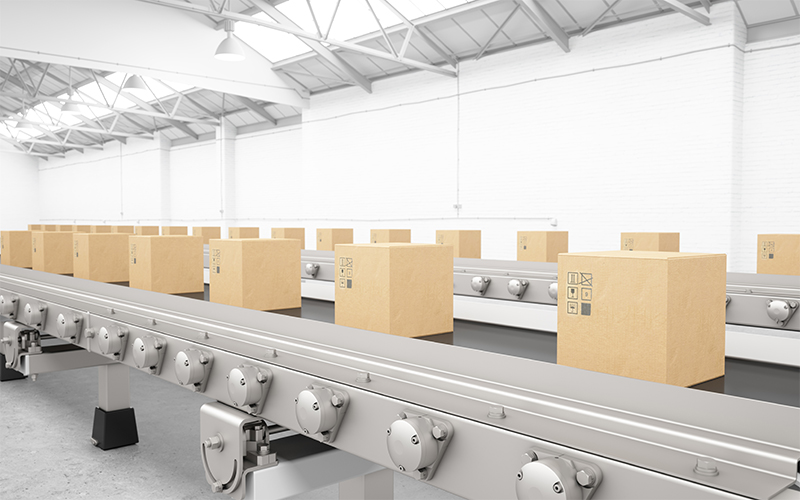Retail, CPG and Logistics
Big data analytics in retail: how they propel businesses forward
Mounting challenges, one solution
The retail industry is always faced with new challenges, and many have succumbed to adversities. The fact that many global retailers have filed for voluntary bankruptcy is a troubling reminder of the disruptions caused by the COVID-19 pandemic.
However, not all retailers are overwhelmed by this ordeal. Many of them have successfully risen spectacularly to the challenge by leveraging digital solutions, especially big data analytics. With inputs from big-data analytics on many retail functionalities, retailers are making informed decisions with positive outcomes.
How data powers micro strategies behind the big picture
- Price optimisation:Deciding on the right price for a product is a complex process as it involves considering factors such as product segment, manufacturing cost, profit margin, consumer affordability, market condition, product demand and competitor price. Businesses need to negotiate so many variables to maximise profit — a daunting prospect.
- Personalised customer engagement:Personalisation is the mantra that businesses breathe and consumers revel in. Statistics puts the proportion of customers likely to buy a product or service from a brand offering personalised services at 80 per cent2. To engage customers in this way, it is important to understand their buying behaviour. Here is where data analysis is useful. The tools analyse past purchase data of customers, which helps to target customers with personalised communication. Taking this a notch higher, analytical tools can also help in determining customers who are most receptive to outreach programs, rewards, and incentives, so that retailers can target specific customers to engage with.
- Enhanced customer experience: Have you noticed product recommendations on Amazon and suggestions for bundled products (prompts to buy scratch guard and mobile cover when buying a mobile online) at a discounted price? This is data analytics at work. This helps retailers to increase their sales through cross selling as well as enhance customer satisfaction. Personalisation to this degree is sure to boost customer experience, which contributes greatly to gaining their loyalty.
- Churn prediction: Losing a customer has more ramifications than just a loss of revenue. It leads to additional marketing in order to attract new customers, which is a huge cost to the business. Every business strives to minimise customer loss (also known as customer churn) and maximise customer retention. This is possible through predictive analysis.
- Improved ROI: Companies spend a lot on marketing campaigns. What is the response to these campaigns? How many of the targeted people actually become customers? Was the investment in the campaign worth it? These are some of the questions every retailer asks. The answers to these help retailers to appraise market strategies that can fetch the highest ROI. Predictive analysis can help retailers become more agile, by measuring the effectiveness of marketing campaigns and discerning their interest in buying a product.*
- Trend prediction and demand forecasting:Understand the drift to understand the demand.
- Optimised stock keeping: Imagine being understocked on a high-demand product, or having a surplus of products that customers have not even laid eyes on! It will be a disastrous, costly, and unwanted prospect. Stock levels can be optimised only with information about inventory and sales. Where data needs to be used, data analytics is the answer. It can help to manage out-of-stock situations and save retail relationships; minimise profit-marginalisation from overstocks and markdowns; and avoid empty-shelves circumstances that compromise consumer experience.
- Retail outlet planning: With analytics, retailers can have information regarding locations where people spend most of their time, demographics, purchasing capacity and market conditions. They can use this intelligence to their advantage, especially when they have plans to open new outlets. By selecting appropriate areas to operate their store outlets, retailers can increase consumer traffic to their shops.
However, predictive analysis has eased this task considerably. Analysis of historical data has shown that lowering the price of a product with subsidised demand leads to an increase in demand. This is contrary to the popular practice of end-of-season sale discounts.
Retailers need to be aware of how trends change. By using predictive analysis, retailers can analyse massive amounts of data about products’ evolution, discern trend patterns and draw inferences about future customer behaviour.
Further, trend prediction helps to estimate future customer demands by taking into account long-term and seasonal drifts. Demand forecasting is a type of predictive analysis that paves the way for effective supply chain management, inventory management and budgeting decisions.
Spotlight on customers, personalisation
With predictive analytics, operational optimisation, efficient planning, supply chain and inventory management, trend and demand forecasting, employee collaboration, and nearly all phases of retail management can gain useful insights.
Adopting big data analytics can enable retailers to adapt to the rapidly changing market. With a personal approach to fostering customer loyalty, retailers can achieve positive customer-centric outcomes. Going forward, personalisation and customer-centeredness will become two absolute necessities for retailers to thrive.
*For organizations on the digital transformation journey, agility is key in responding to a rapidly changing technology and business landscape. Now more than ever, it is crucial to deliver and. Enabling businesses to sense, learn, respond, and evolve like a living organism, will be imperative for business excellence going forward. A comprehensive, yet modular suite of services is doing exactly that. Equipping organizations with intuitive decision-making automatically at scale, actionable insights based on real-time solutions, anytime/anywhere experience, and in-depth data visibility across functions leading to hyper-productivity, Live Enterprise is building connected organizations that are innovating collaboratively for the future.






